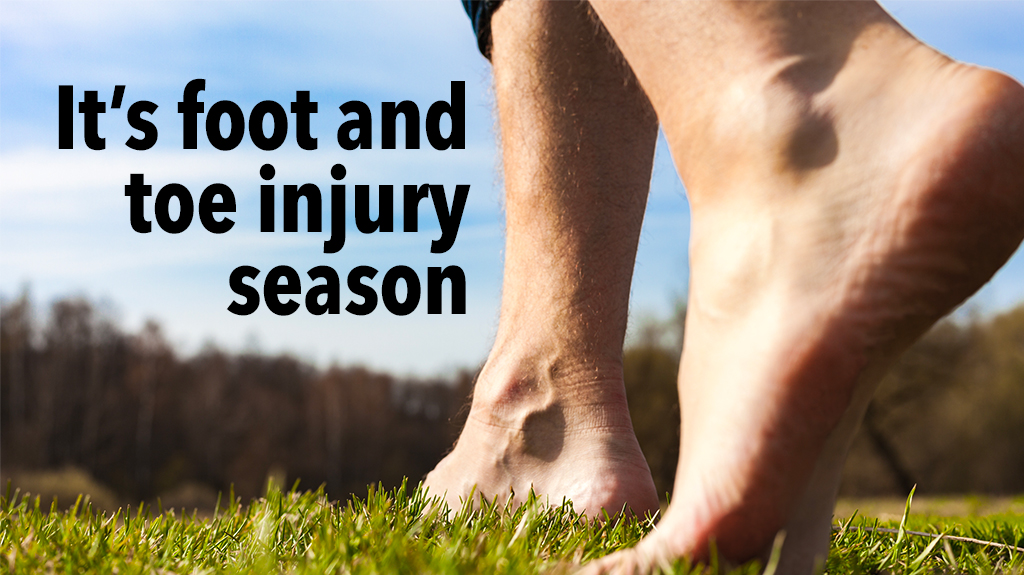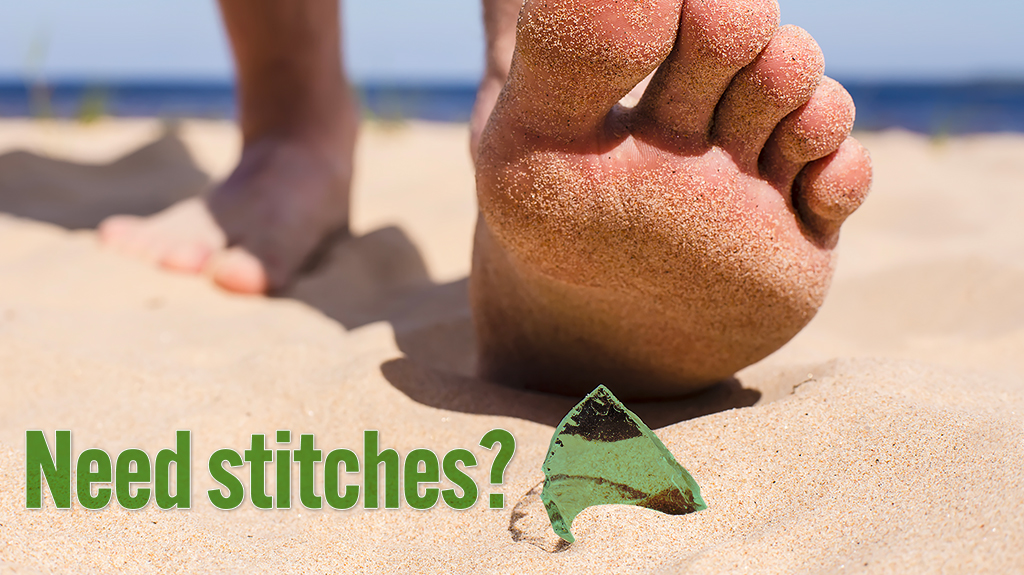
Each summer at Coastal Urgent Care we see an increase in patients with painful toe or foot-related injuries and infections. Broken and jammed toes, toenail-related injuries, rashes like athlete’s foot and ingrown toenails happen all year long, but because of the amount of time spent barefoot and in sandals, the need for medical attention climbs over the summer months. This month’s blog offers guidelines for when to head to urgent care, how to decrease your odds for foot issues and a few tips for caring for foot and toe injuries at home.
Patients tend to diminish foot, toe and nail injuries but feet, toes and nails are very painful and are prone to infection. Some of the most common foot and toe-related medical issues we see are discussed below.
As soon as the flip-flops and sandals emerge for warm weather, toe and foot injuries become more common. Without the protection and support of closed-toe shoes, feet are the victims of drops, stubs, jams and cuts.
Because of the weight and movement your feet and toes endure, they can be slow to heal and often worsen or become infected over time. If prompt at-home first aid doesn’t offer relief, allow for a full cleaning or if your injury won’t stop bleeding, it’s time for urgent care.

If you suspect the injury might need stitches, come in sooner rather than later. You might need stitches if:
If in doubt, go to urgent care. Stitches are most successful if you receive them at the time of the injury, and scarring and recovery times also decrease.
Insect bites and stings are common summer consequences of barefoot living. Most of the time, they resolve with at-home treatment. We offer treatment tricks here, but if you can’t get relief or if a bite becomes infected, come to urgent care.
Many of us have experienced an ingrown toenail and for some people they are chronic. To alleviate pain, soak your foot in warm water for 15-20 minutes, allow it to thoroughly dry and apply an over-the-counter antibiotic ointment to the toenail where it is growing into your toe. Repeat this daily, keep the area clean and if you can, wear open-toed shoes. However, if signs of infection set in – redness, swelling or continued pain – it’s wise to head to urgent care. We can help resolve the ingrown toenail, get you cleaned up and if appropriate, prescribe antibiotics. Once an infection sets into a toe it rarely self-resolves, so you can save some unnecessary pain by seeing us sooner rather than later.
Toenails can take a beating. In fact, protecting your tender toes is exactly their function. But that means they’re also at risk of being torn, broken or split. Toenail injuries call for the same vigilance against infection as the rest of the body. If you are not able to adequately trim the damaged portion, clean and bandage it, urgent care can help. If you have exposed the nail bed, be sure to treat it just as you would treat an open wound. Toenails seem tough but their location makes them prone to infection. If the area becomes warm, red or swollen, search for “Coastal urgent care near me” and come see us for help.
Athlete’s foot is very common all year, but heat and sweat can exacerbate the condition so that it flares and becomes very uncomfortable. If you’ve already tried over-the-counter creams or powders and your rash feels hot or involves discharge that is anything besides clear, head to urgent care for next-level care.
Broken foot bones – even in the tiniest pinky toe – can be extremely painful. Bone breaks in the foot and toes call for different levels of medical support depending on the location of the break. For example, broken bones in the foot call for an X-ray and a treatment plan while broken toes typically rely on strategic wrapping rather than casting or splinting. In both cases, it’s important to have it looked at so that you can manage the injury and lower the risk of long-term damage.
Sometimes it’s obvious that you’re dealing with an urgent care moment – bleeding, pain and possible breaks make going to urgent care an easy choice. But some minor injuries can be treated at home. Here are general guidelines:
wasp nest, a lot of pain could be avoided simply by wearing shoes. (That said, we see a surprising number of accidents related to flip-flops – people walk out of them, trip over the tips and slip on wet surfaces. Traditional sandals with straps are a better choice.)
And… let your feet breathe. Yes, we just told you to wear your shoes. But when you’re somewhere safe – at home or in bed – go without socks and shoes and let them get air and dry out. When you are wearing shoes, choose sock and shoe materials that wick moisture to avoid sweaty feet. Warm, sweaty skin invites fungus and bacteria.
Take your time. When we ask patients how they injured themselves, so many tell us that they were in a rush! From stubbing or breaking toes on furniture, to dropping things in the chaos of getting out the door and on to the next thing, a lot of injuries could be avoided. No matter what goes wrong to take your foot or toes out of commission, remember that Coastal Urgent Care is here for you. Find the closest location to you here.
Reviewed by: Frank Garber, APRN, FNP-C
If you are in a situation that might be life-threatening, go straight to the emergency room or call 911. Situations like this include shortness of breath or breathing problems; seizures or ‘blackouts’; sudden vision problems; confusion or dizziness; heavy bleeding; possible breaks that appear to be deformed or blue, or that include bleeding; serious burns; the inability to speak or move; head and neck injuries.
